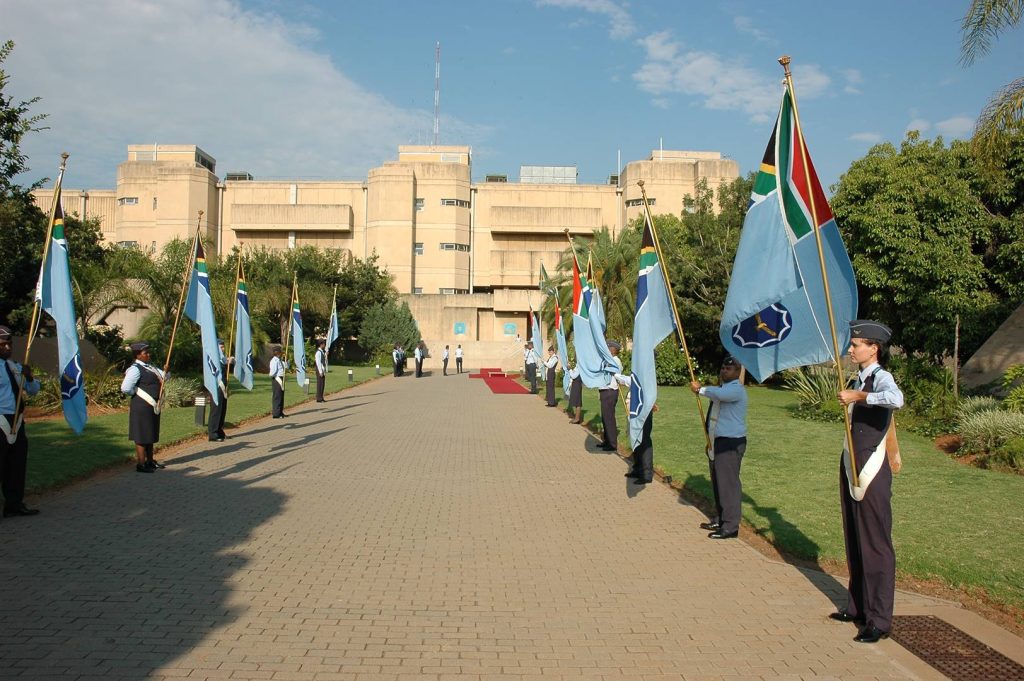Three floors underground at the Air Force headquarters in Pretoria, soldiers are sweating in temperatures of almost 40°C with no ventilation.
It gets so hot that the computer servers frequently overheat.
The working conditions became so unbearable that the Defence Force union, Sandu, issued an ultimatum to the air force last week.
According to that, Lieutenant-general Wiseman Mbambo, chief of the air force, has to provide an outline of how they will bring the situation in line with occupational safety regulations. If not, the union will ask the department of labour to intervene.
The air force headquarters, which was commissioned 30 years ago and has room for 1 200 employees, has two floors above ground and three floors below.
According to the Air Force, only one of six enormous temperature control systems on the roof is currently in working order. Of the three systems that must control the temperature of the floors underground, two are operating at 50% capacity and one is completely unserviceable because it has reached the end of its life.
Sources say the components for the systems are so out of date that they are no longer reparable. Replacing the systems could cost up to R5 billion, they estimate.
With the budget currently so tight that more than three-quarters of the Air Force’s aircraft are unserviceable, however, the replacement of air conditioning systems is low on the priority list.
According to Sandu’s letter, the problem with the air conditioning systems has been an issue on for years.
The union says its members in the building are loyal to the military and conscientious. But they are exposed to “inhumane, unsafe and illegal” working conditions at the expense of their own health.
After one of the employees in the building recently posted a photo on social media of the temperature inside the building at 39.6°C a discussion on the post followed. One of those who spoke received a phone call from a private number the evening after the post.
He was warned that if he spoke out again his family would not see him on his next birthday. The threat was that a taxi would force him off the road in a “hijacking” and that he would not even make it to 1 Military Hospital’s casualty department.
The building’s air conditioning and water systems have been causing problems since they were commissioned three decades ago – especially when repairs had to be done in the underground floors.
A number of years ago, an alternative building was available as a way out, but the top command apparently refused to move. This building is now no longer available and the budget has been cut even further.
The Air Force command post, which is the heartbeat of the Air Force, sits at the bottom of ‘The Hole’. The computer servers that often overheat due to the scorching temperatures are also found there.
General Rudzani Maphwanya, the head of the Defence Force, issued an instruction to the entire defence force in October in which the consequences of negligence in applying occupational safety legislation in the workplace are spelled out in fine detail.
This includes prosecution and eventually possible imprisonment for those who do not comply with the legislation.
According to Brigadier General Andries Mahapa, the defence force spokesperson, the Air Force is trying to remedy the situation with the installation of mobile air conditioners.
However, insiders say that this does not solve the ventilation problem as it only recirculates old air and ultimately results in the people inhaling carbon monoxide. During the Covid-19 pandemic, this was one of the reasons why the building had to be temporarily closed as viruses and germs were rapidly circulated.
Mahapa says some of the staff have already been transferred to outside units and more transfers are being considered. When the heat in the building gets too bad, directorates can use their discretion to let people work from home instead.
The Air Force also obtained a quote for components to install an improved system.
These will be handled by the Defence Force works department, but Mahapa does not say when this process will be completed.
The instruction from Maphwanya expressly states that it is effective on the day of his signature – 13 October 2023. This includes continuous testing of the air and hygiene of air conditioners to ensure they are suitable for human use.
The defence force chief of logistics must conduct inspections to ensure the defence force buildings are all in compliance with occupational safety legislation. And the head of legal services must ensure that the legislation is applied.
© News24
